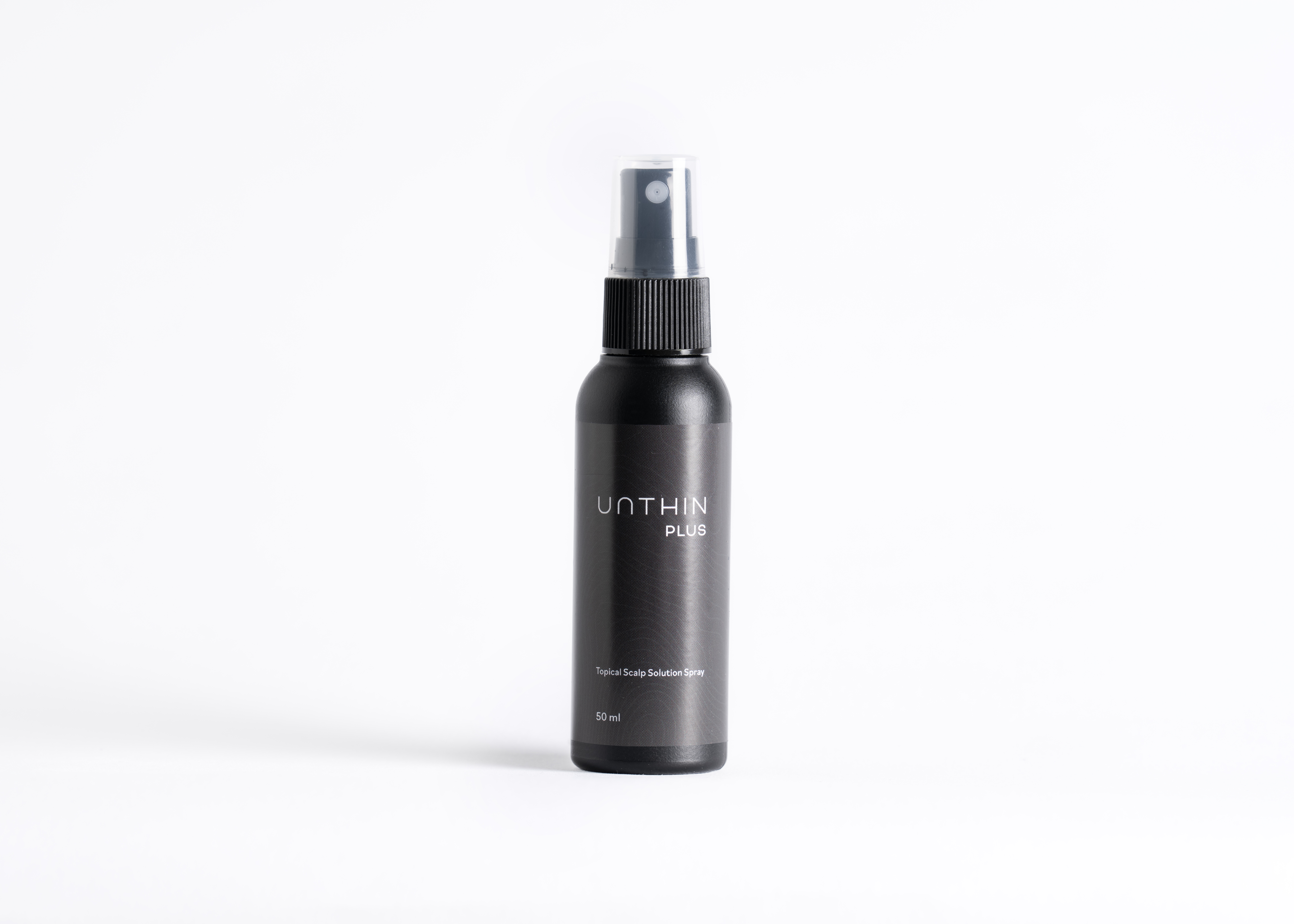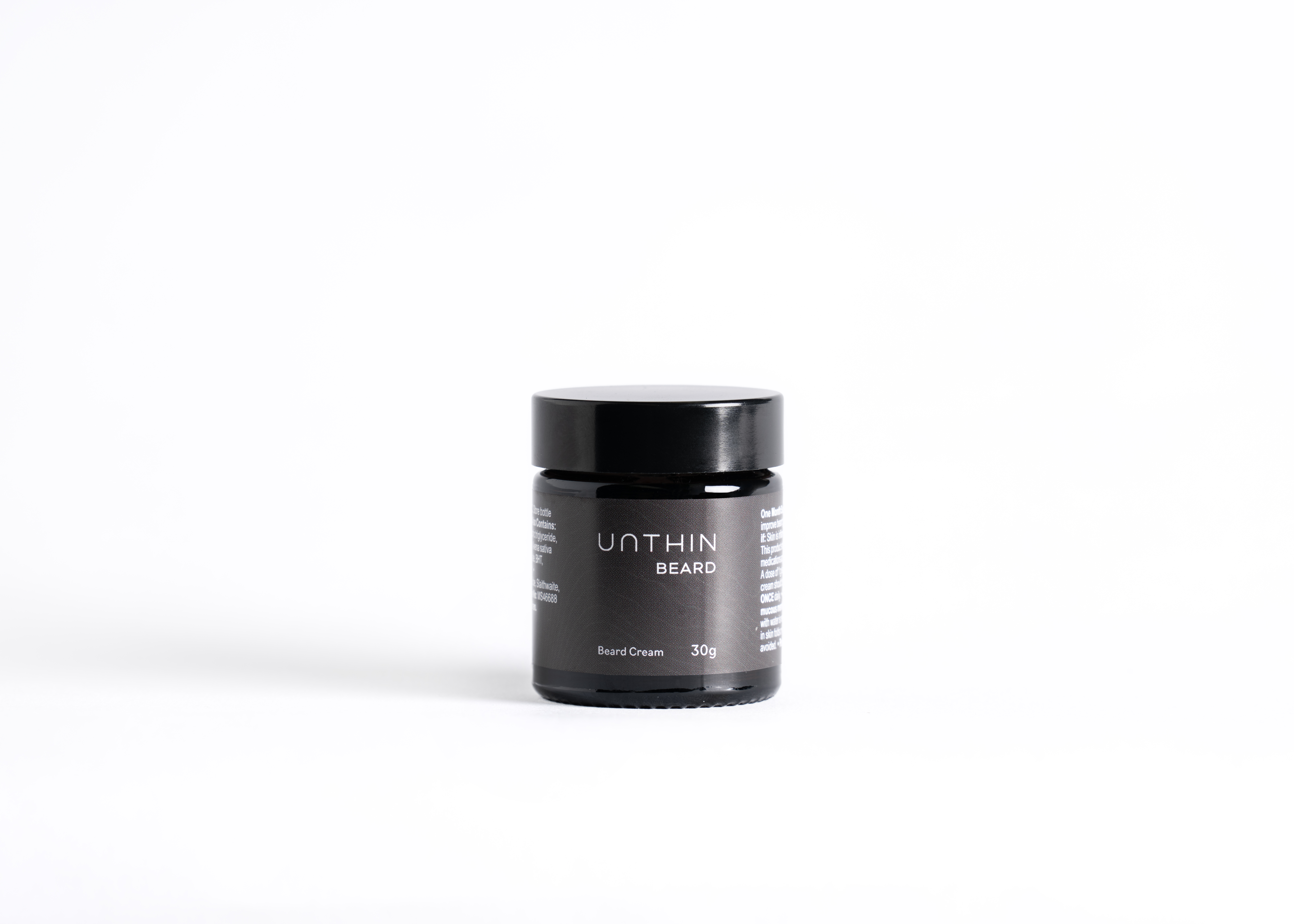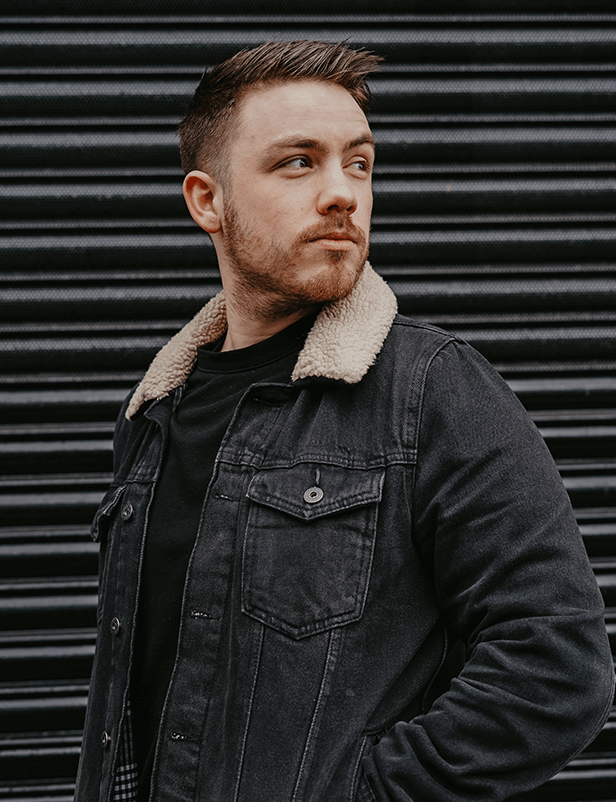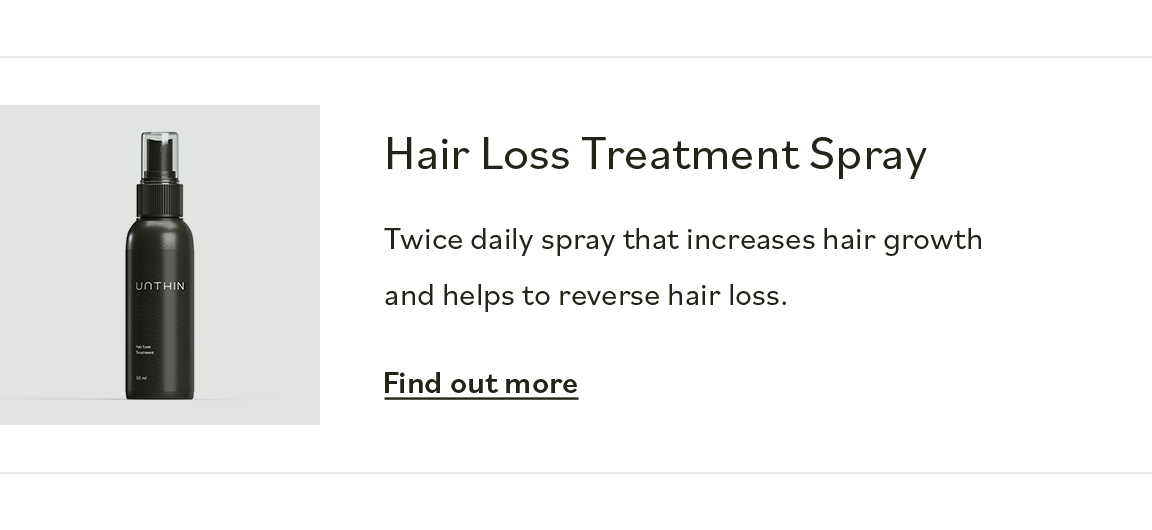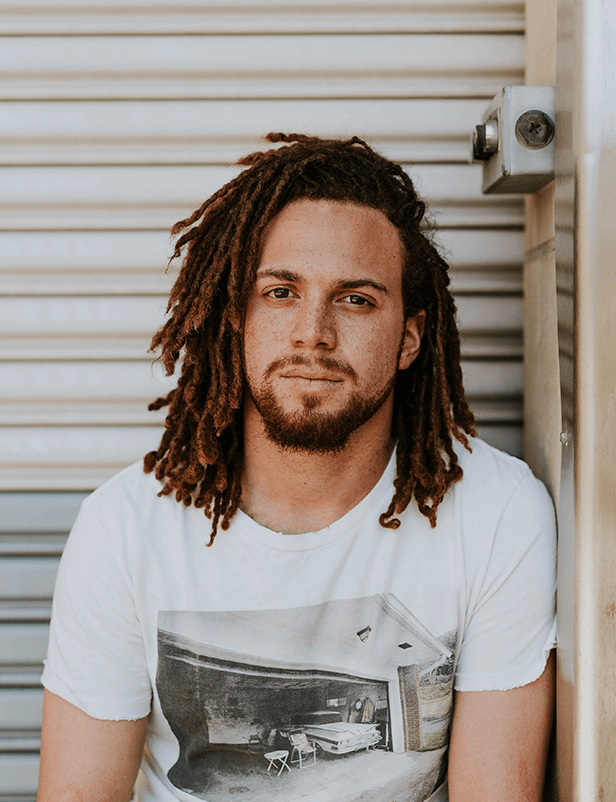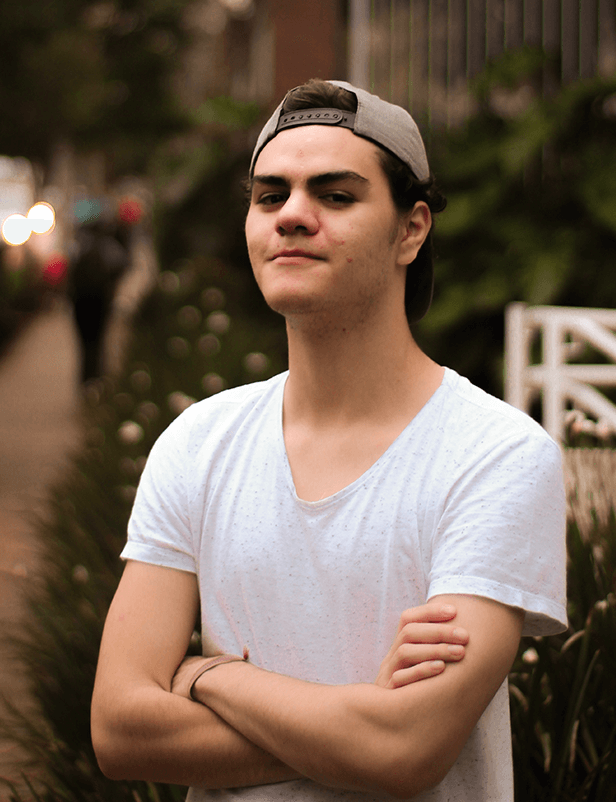What You Need to Know About Hair Loss
You’re not alone if you’ve started losing your hair, in fact, hair loss affects roughly 30% of men before 30 years old. It’s more than likely that it’ll cause problems with your confidence and self-esteem. But it’s important to know about hair loss in order to treat it.
One of the most common types of hair loss in men is Male Pattern Baldness (MPB), which describes a loss of hair on the scalp, usually at the crown of the head or the hairline. Here, hair will tend to fall out in a type of pattern, but the rate and extent of it is different for everybody.
We know that hair loss can be a frustrating struggle, so strap in as we unpack what you need to know about hair loss, the science, causes, and treatments available.
Hair loss on the scalp
It’s helpful to know that hair loss on the scalp is extremely common. Around 6.5 million men in the UK experience MPB. Understandably, it’s assumed that baldness is something men just tend to experience with age, but it’s a lot more complex than that. Some men notice early signs of hair loss as early as their teenage years.
A receding hairline is something men will tend to notice first. Here, hair will tend to thin around the temples, creating a U-shaped type hairline. Equally, many will begin to develop a bald patch at the crown of the head, which will usually go unnoticed until it’s pointed out by someone else first. However, by this time, a lot of hair may have already fallen out.
Alternatively, some can experience a type of ‘diffuse thinning’ around the whole head or bald patches in specific areas. It’s important to know that losing hair on your scalp isn’t always down to Male Pattern Baldness, sometimes there are different factors involved.
If you’re unsure of what kind of hair loss you’re experiencing, take a look at our ‘Early Signs Of MPB’ blog.
The Hair Growth Cycle
Understanding the science behind hair growth is important when it comes to making the relevant steps in order to treat it. We shed around 50-100 hairs a day as part of the natural hair growth life-cycle, where hair grows, rests, and naturally sheds. We usually notice this shedding process when brushing or washing our hair.
Hair follicles, which lie beneath the surface of the scalp, play a key role in this growth cycle. We have around 100,000 hair follicles on our scalp, and they work to deliver nutrients to the hairs as they grow.
The hair growth cycle goes through different stages, including the Anagen, Catagen, Telogen and Exogen phases.
The Anagen Phase – The hair is in a growing phase, lasting around 3-5 years.
The Catagen Phase – Hair will stop growing and will detach from the Dermal Papilla (the hair’s blood supply). This phase will last a few weeks.
The Telogen Phase – Also known as the ‘resting’ phase, the hair will simply rest in the scalp while the follicle lies dormant for a few months.
The Exogen Phase – The hair sheds, and a new hair grows. This kickstarts the Anagen phase again.
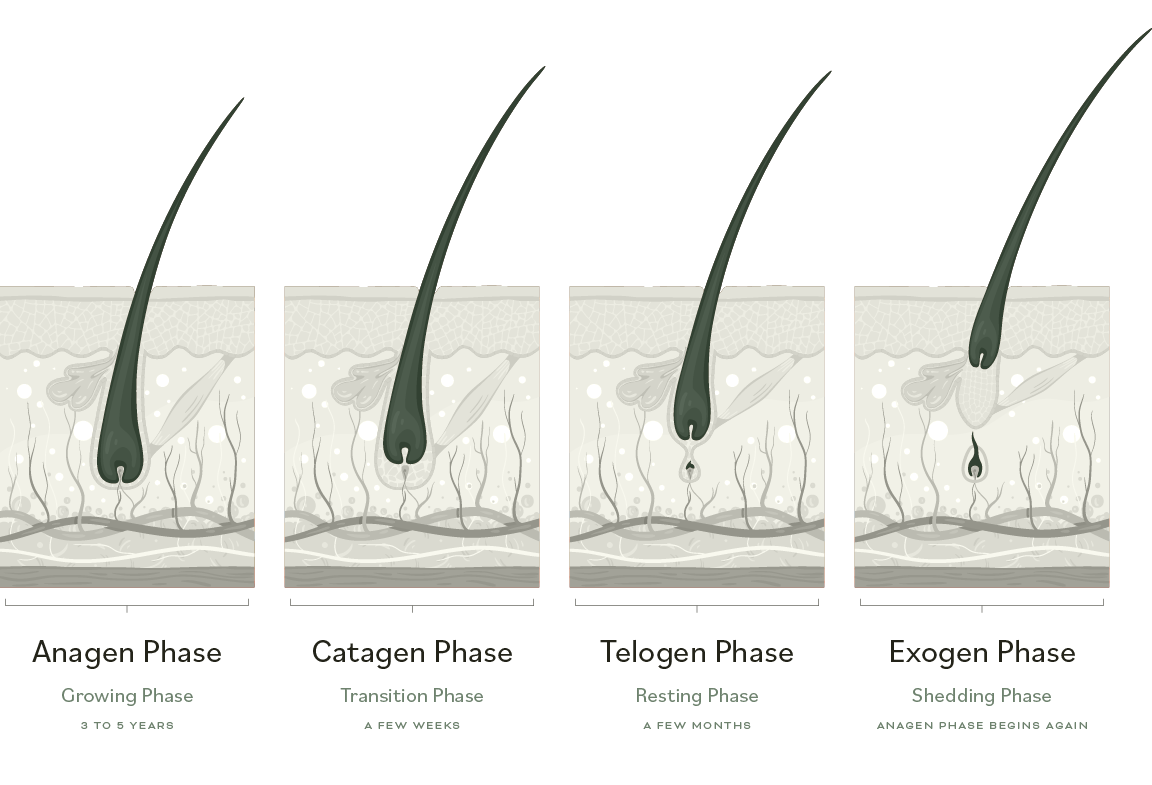
DHT and hair loss
With this in mind, we can now see what happens to hair follicles when experiencing Male Pattern Baldness.
The hormone DHT is hugely responsible for Male Pattern Baldness. It affects hair follicles differently depending on someone’s genetic predisposition to experiencing hair loss in their lifetime. DHT is known to shrink, weaken and eventually stop hair follicles from producing new and healthy hairs.
DHT will shrink the hair follicles more and more after each cycle, producing thinner hairs every time. Eventually, hair is unable to even break through the skin, leading to baldness.
So, what’s the solution?
Relax. Treating hair loss is easier than you think.
It is best to treat hair loss sooner rather than later. Unfortunately, the later you leave your hair loss to progress, the trickier it will be to regrow.
There are a variety of ways to treat baldness, all of which can drastically vary in price. Different treatments work for different people, and it’s important to do your research to choose the right treatment for you.
Finasteride – Finasteride is a treatment that has shown great results for those experiencing Male Pattern Baldness in preventing further hair loss and even regrowing hairs.
Finasteride can be ingested orally in a tablet form or is applied directly to the scalp (Topical Finasteride). It works to stop the conversion of testosterone into DHT and works to prevent DHT from interfering with hair follicles.
Minoxidil – Minoxidil is another key treatment that has shown excellent results for those with hair loss. It is a topical treatment that is applied directly to the source of hair loss.
Minoxidil works to deliver nutrients to hair follicles, increasing the hairs in size and causing them to thicken.
Hair Transplants – A hair transplant is another well-known treatment. These can be pretty expensive, ranging from £1,000 – £30,000. During a hair transplant, certain areas of the scalp which grow hair well are removed and transplanted onto the areas of the head that don’t.
While hair transplants may appear like the final, permanent solution, they are not as long-lasting as they are marketed to be. Transplants require regular maintenance, often with the aid of Minoxidil and Finasteride.
Therefore even if you were to get a hair transplant, you would likely use a similar solution to the Unthin treatment!
Scalp Reduction – A scalp reduction involves surgically removing the bald area of the scalp and stretching the areas unaffected by hair loss to cover and replace it. This kind of treatment can produce an ‘unnatural’ look, with hairs growing in an artificial-type direction.
Natural Remedies – You may have already come across some natural remedies which claim to treat hair loss. These can include coconut oil, pumpkin seed oil, caffeine and more. Unfortunately, therapies like these lack the scientific evidence for effective treatments. There is no guarantee that these will provide you with the kind of results shown by Finasteride and Minoxidil.
The Unthin Treatment
Both Finasteride and Minoxidil have shown to be the most effective treatments on the market for tackling male hair loss. That’s why we’ve combined both of these popular and tried-and-tested solutions into one twice-daily grease-free and odourless head spray.
Many other treatments provide Finasteride in a tablet form, which has produced adverse side effects in some. Unthin’s treatment is not ingested and is directly applied to the source of hair loss. This means the potential side effects are minimal, and the treatment has an increased success rate. Find out more about our treatment here.
